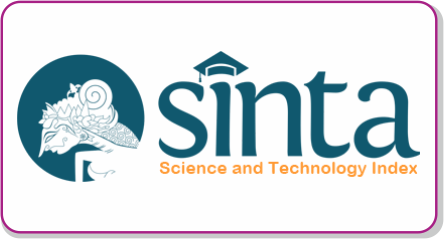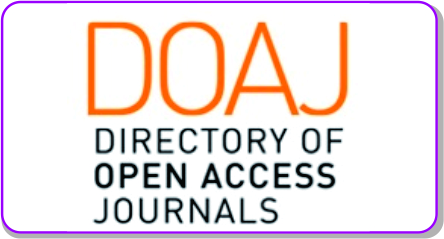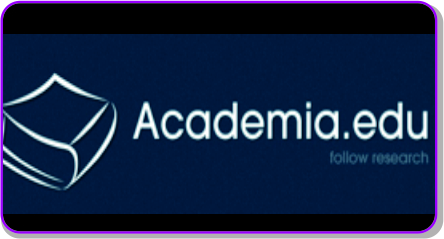Analysis of Islamic Messages in the Lyrics of Sawéran Local Wisdom in The Pasirtamiang Communities in Ciamis
DOI:
https://doi.org/10.30983/it.v4i2.3428Keywords:
Local wisdom, Sawéran, Islamic valuesAbstract
The research is focused on finding the social, geographical, and religious context of the sawéran tradition in the Muslim community of Pasirtamiang, the dynamics of the message narrative in the sawéran lyrics, and the Islamic values and messages contained therein. This focus is important so that the dialectic between religion and culture, which is sometimes seen as a form of syncretism that endangers religion's existence, can be clarified. In this writing, the Muslim community of Pasirtamiang shows a fairly representative model of religious and cultural dialectics so that their people can preserve their cultural heritage without losing their Islamic identity. The research used explanative methods to find causal relationships between local wisdom facts identified by participant observation and in-depth interviews. The results showed that the socio-geographic and religious factors of the Pasirtamiang community also influenced the development process of the sawéran tradition. The format and substance of the sawéran content have transformed, the lyrics are simpler, and the Islamic values are emphasized, both technically and substantially. Islamic values in the lyrics sawéran are classified into divine, spiritual, and moral values. Overall, the content of sawéran's lyrics is an integral part of the Islamic message.
Penelitian difokuskan untuk menemukan konteks sosial, geografis, dan religius tradisi sawéran dalam masyarakat muslim Pasirtamiang, dinamika narasi pesan dalam lirik saweran, serta nilai dan pesan Islam yang terkandung di dalamnya. Fokus ini penting supaya dialektika antara agama dan budaya, yang terkadang ditengarai sebagai bentuk sinkretisme yang membahayakan eksistensi agama, dapat diklarifikasi. Dalam tulisan ini, masyarakat muslim Pasirtamiang menunjukkan model dialektika agama dan budaya yang cukup representatif sehingga masyarakatnya dapat melestarikan warisan budaya tanpa kehilangan identitas keislamannya. Penelitian ini menggunakan metode eksplanatif untuk menemukan hubungan kausalitas antara fakta kearifan lokal yang diidentifikasi melalui observasi partisipan dan wawancara mendalam. Hasil penelitian menunjukkan bahwa faktor sosial-geografis dan keagamaan masyarakat Pasirtamiang turut mempengaruhi proses perkembangan tradisi sawéran. Format dan substansi isi sawéran telah mengalami transformasi, penuturan liriknya lebih sederhana dan semakin menegaskan nilai-nilai keislaman, baik secara teknis maupun substansial. Nilai-nilai Islam dalam lirik sawéran diklasifikasikan menjadi nilai ketuhanan, spiritual, dan moral. Secara keseluruhan, isi lirik sawéran merupakan bagian tak terpisahkan dari pesan Islam.
References
Affandy, Sulpi. “Penanaman Nilai-Nilai Kearifan Lokal dalam Meningkatkan Perilaku Keberagamaan Peserta Didik.†Atthulab: Islamic Religion Teaching and Learning Journal 2, no. 2 (2019): 69–93. https://doi.org/10.15575/ath.v2i2.3391.
Agoes, A. Kiat Sukses Menyelenggarakan Pesta Perkawinan Sunda. Jakarta: Gramedia Pustaka Utama. 2003.
Ayatrohaedi. Keribadian Budaya Bangsa (Local Genius). Jakarta: Pustaka Pelajar. 1986.
Bratawidjaja, T. W. Upacara Perkawinan Adat Sunda. Jakarta: Sinar Harapan. 1990.
Daniah. “Kearifan Lokal (Local Wisdom) Sebagai Basis Pendidikan Karakter.†Pionir: Jurnal Pendidikan 5, no. 2 (2016): 1–14.
Edi, E. Kebudayaan Sunda. Bandung: Grimuka. 1995.
Marhayani, Dina Anika. “Development of Character Education Based on Local Wisdom In Indegenous People Tengahan Sedangagung.†JETL (Journal of Education, Teaching and Learning) 1, no. 2 (2016): 66. https://doi.org/10.26737/jetl.v1i2.40.
Masduki, Aam. “Sawer Panganten Tuntunan Hidup Berumah Tangga di Kabupaten Bandung.†Patanjala : Jurnal Penelitian Sejarah dan Budaya 7, no. 3 (2015): 431. https://doi.org/10.30959/patanjala.v7i3.111.
Meliono, Irmayanti. “Understanding the Nusantara Thought and Local Wisdom as an Aspect of the Indonesian Education.†Tawarikh: International Journal for Historical Studies 2, no. 2 (2011): 221–34.
Moleong, L. J. Metodologi Penelitian Kualitatif. Bandung: Remaja Rosdakarya. 2006.
Muslim, K L. “Nilai-Nilai Islam dalam Budaya dan Kearifan Lokal (Konteks Budaya Minangkabau).†Jurnal Fuaduna: Jurnal Kajian … 2, no. 1 (2018): 1–12.
Oktafia, Renny, and Imron Mawardi. “Islamic Values in The Tradition of Samin Community at East Java.†QIJIS (Qudus International Journal of Islamic Studies) 5, no. 1 (2017): 97. https://doi.org/10.21043/qijis.v5i1.2027.
Rahman, Agus Abdul, Sarbini Sarbini, Tarsono Tarsono, Elis Anisa Fitriah, and Agus Mulyana. “Studi Eksploratif Mengenai Karakteristik dan Faktor Pembentuk Identitas Etnik Sunda.†Jurnal Psikologi Islam dan Budaya 1, no. 1 (2018): 1–8. https://doi.org/10.15575/jpib.v1i1.2072.
Ridwan, Nurma Ali. “Kearifan Lokal : Fungsi dan Wujudnya.†Jurnal Studi Islam dan Budaya 5, no. 1 (2007): 1–8.
———. “Landasan Keilmuan Kearifan Lokal.†Ibda` 5, no. 1 (2007): 1–8.
Sartini, S. “Menggali Kearifan Lokal Nusantara Sebuah Kajian Filsafati.†Jurnal Filsafat 37, no. 2 (2004): 111–20.
Setiyawan, Agung. “Budaya Lokal dalam Perspektif Agama: Legitimasi Hukum Adat (‘Urf) dalam Islam.†Esensia: Jurnal Ilmu-Ilmu Ushuluddin 13, no. 2 (2012): 203. https://doi.org/10.14421/esensia.v13i2.738.
Shufa, Naela, K. F. “Pembelajaran Berbasis Kearifan Lokal di Sekolah Dasar: Sebuah Kerangka Konseptual.†Jurnal Ilmiah Kependidikan 1, no. 1 (2018): 48–53.
Suhartini, Sri, Bintarsih Sekarningrum, M. Munandar Sulaeman, and Wahju Gunawan. “Social Construction of Student Behavior through Character Education Based on Local Wisdom.†Journal of Social Studies Education Research 10, no. 3 (2019): 276–91.
Sujati, Budi. “Tradisi Budaya Masyarakat Islam di Tatar Sunda (Jawa Barat).†Ishlah: Jurnal Ilmu Ushuluddin, Adab dan Dakwah 1, no. 1 (2020): 37–51. https://doi.org/10.32939/ishlah.v1i1.29.
Sukardi, Ismail. “Character Education Based on Religious Values: An Islamic Perspective.†Ta’dib 21, no. 1 (2016): 41. https://doi.org/10.19109/td.v21i1.744.
Sukarniti, Ni Luh Ketut. “Pewarisan Nilai-Nilai Kearifan Lokal Untuk Memproteksi Masyarakat Bali dari Dampak Kemajuan Teknologi.†Jurnal Ilmiah Cakrawarti 3, no. 1 (2020): 39–50. https://doi.org/10.47532/jic.v3i1.135.
Supinah, Pien. “Sawer: Komunikasi Simbolik Pada Adat Tradisi Suku Sunda dalam Upacara Setelah Perkawinan.†Mediator: Jurnal Komunikasi 7, no. 1 (2006): 85–94. https://doi.org/10.29313/mediator.v7i1.1225.
Suganda, P. Upacara Adat Sunda. Bandung: Sumur Bandung. 1964.
Suswandari. “Incorporating Beliefs, Values and Local Wisdom of Betawi Culture in a Character-Based Education through a Design-Based Research.†European Journal of Contemporary Education 6, no. 3 (2017): 574–85. https://doi.org/10.13187/ejced.2017.3.574.
Yusuf, Yusuf. “Integrasi Pendidikan Karakter Berbasis Qurani dan Kearifan Lokal Bugis.†Jurnal Studi Agama dan Masyarakat 11, no. 2 (2017): 247. https://doi.org/10.23971/jsam.v11i2.452.
Wales, H. G. The Making of Greater India: A Study in South-East Asian Culture Change. London: Bernard Quaritch. 1961.
Interview
Mastur (Sawér Actor the Pasirtamiang Village), Interview, 12 February 2019
Oping Arifin (Head of Pasirtamiang Village), Interview, 12 February 2019
Maimun (Chairman of the Household of Kertasari Pasirtamiang), Interview, 1 November 2018.
Juju Sutisna (Public Figure in the Pasirtamiang), Interview, 1 November 2018.
Downloads
Additional Files
Submitted
Accepted
Published
Issue
Section
License
Authors who publish with this journal agree to the following terms:
- Authors retain copyright and grant the journal right of first publication with the work simultaneously licensed under a Creative Commons Attribution-ShareAlike 4.0 International License that allows others to share the work with an acknowledgment of the work's authorship and initial publication in this journal.
- Authors are able to enter into separate, additional contractual arrangements for the non-exclusive distribution of the journal's published version of the work (e.g., post it to an institutional repository or publish it in a book), with an acknowledgment of its initial publication in this journal.
- Authors are permitted and encouraged to post their work online (e.g., in institutional repositories or on their website) prior to and during the submission process, as it can lead to productive exchanges, as well as earlier and greater citation of published work (See The Effect of Open Access).













